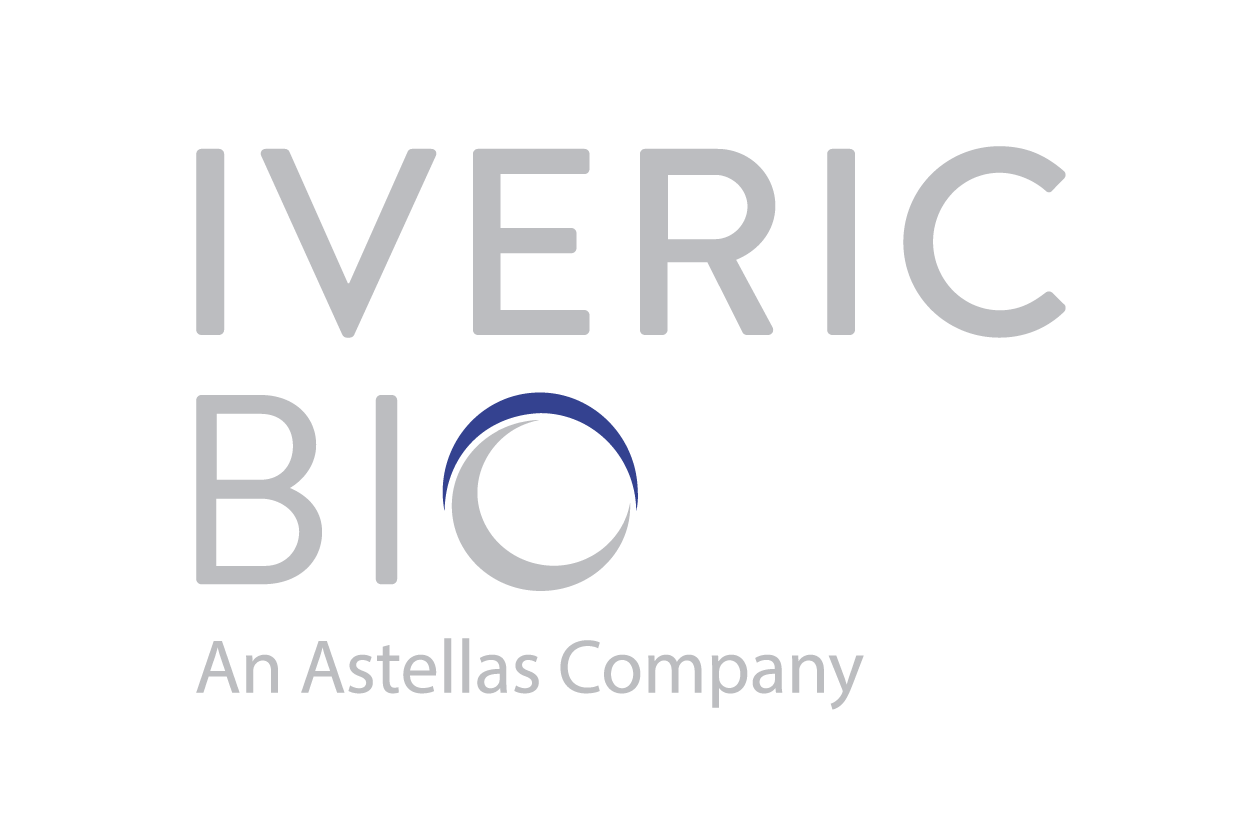Download Transcript PDF
Please note: This Chat has been edited for clarity and brevity.
DR. PREETI SUBRAMANIAN: Good afternoon. I’m Preeti Subramanian, Director of Vision Science Programs at BrightFocus Foundation. Welcome to this month’s Chat. Today’s topic is “Occupational Therapy for Low Vision: What You Need to Know.” Let me take a moment to tell you about BrightFocus and what we do. BrightFocus Foundation funds some of the top researchers in the world. We support scientists that are trying to find cures for macular degeneration, glaucoma, and Alzheimer’s. We share the latest news and developments from these scientists with families who are impacted by these diseases. We have a number of free publications and plenty of materials on our website, www.BrightFocus.org, that offer tips for living with diseases such as macular degeneration. Today’s BrightFocus Chat is another way for sharing this information. Once a month, we have the opportunity to spend 30 to 40 minutes with leading experts on vision disease and eye health, and we’re very fortunate to have Dr. Allysin Bridges-German with us today. With that, let me introduce you to our new guest today, Dr. Allysin Bridges-German. She is a registered licensed occupational therapist and is also a clinical assistant professor at Towson University. She has been practicing for over 20 years, treating adults in various settings—like Shock Trauma, hospitals, rehab, homes in the community—with all types of diagnoses, but her expertise and passion lies with fall prevention, aging in place, and age-friendly communities. Allysin, thank you so much for joining us, and welcome to the BrightFocus Chat.
DR. ALLYSIN BRIDGES-GERMAN: Thanks so much, Preeti. Thanks so much for having me.
DR. PREETI SUBRAMANIAN: So, I would like to start with a very basic question: What is an occupational therapist, and what is their role in working with people who have low vision? What can you say about your profession that will let people know what they should expect to gain from your services?
DR. ALLYSIN BRIDGES-GERMAN: I get that question a lot. I get: What is an OT? Does it mean overtime? It is not overtime. I don’t help people get jobs. OTs are holistic functional problem solvers. We help people who have experienced any kind of injury and illness—some sort of alteration in their baseline of functioning—to maximize their independence and daily routines and roles—what we call “activities of daily living,” or ADLs. As experts in activity analysis and environmental modifications, OT practitioners … we take a holistic approach. We look at the whole person, and we determine how vision impairment has limited or even impacted people’s ability to complete specific tasks, how they navigate their environment, and then we modify that task or their environment to minimize or even remove those limitations, with the person’s input. We really like to keep things—what we call—“client-centered.” We don’t want to just make the decisions for people. We want people to make the decisions with us. So, factors that inhibit participation in activities, safety, independence—they’re all evaluated by the OT, and then they’re followed by recommendations for possible equipment or, again, those modifications to improve or increase independence. Specifically, low vision OTs go through additional training and certification and provide services to teach exercises and techniques, like eccentric viewing, visual tracking, visual scanning.
DR. PREETI SUBRAMANIAN: Thank you for that. So, it seems … for many people who don’t know how to start this journey, how do you realize that you need to take this step and reach out to an OT? Does one look for cues and change in vision sharpness, vision field? How does one get started, and how does one go about finding an OT?
DR. ALLYSIN BRIDGES-GERMAN: A lot of times people will begin bumping into things, where people know their environment very well, especially in their homes. I can’t tell you how to navigate your home. You’re going to be able to tell me how you navigate your home, and when you start bumping into things in your own home, that’s a big red flag. If you are missing things on your plate … if suddenly you’ve missed an entire side of your plate, and you look over and, you know, you think that you’re done with your meal, and you look around and you realize that you haven’t finished everything, that’s another red flag. So, if you feel that way, and these red flags are popping up, occupational therapy practitioners can help with just a variety of tips and provide skilled services to specific individuals with those kinds of needs. It’s not a cookie-cutter practice; it’s very individualized. So, if you’re interested in beginning that process, you would go to your primary care provider or your optometrist or your ophthalmologist for a recommendation for a low vision OT prescription, and a lot of times we’re available through most hospitals, outpatient facilities, clinics, private practices. So, it really does sometimes depend on your health insurance coverage, which … usually they do include low vision OT. And I can tell you that with … I’ll go a little bit further into that. I know that Medicaid services are state by state for OT coverage. Medicare has extended coverage for low vision rehab, but I know for sure that Medicare requires a referral from an optometrist or a physician.
DR. PREETI SUBRAMANIAN: Thank you for that. So, do OTs also do home visits for assessment—as you mentioned that these are case-by-case bases—to observe some of the specific challenges that someone might be facing and to teach technique and make recommendations for specific equipment and changes?
DR. ALLYSIN BRIDGES-GERMAN: It’s one of my favorite things to do. Home safety evaluation is definitely in our wheelhouse. We can come into your home and help you problem solve and figure out what is bothering you the most, what are you having the most challenge with. We might help you even figure out something that you may not have thought was such a problem and realize that, “Wow, that really is a problem,” or, “Oh, I didn’t think of that.” So, we absolutely can come into the home and help you with a home safely evaluation and figure out and find solutions to problems.
DR. PREETI SUBRAMANIAN: Great. And you mentioned about insurance coverage. We had a question from the audience about which doctor has to request the OT prescription. Does it have to be the ophthalmologist, low vision doctor, or a retina specialist?
DR. ALLYSIN BRIDGES-GERMAN: Yeah, your primary care provider, whoever that may be be—if it is a physician, a nurse practitioner, whoever is your PCP—can absolutely prescribe … write a prescription for an OT … for a low vision OT assessment. Your optometrist or your ophthalmologist can write that script also.
DR. PREETI SUBRAMANIAN: One of your areas of expertise is fall prevention, and in old age, and especially for people with low vision, falls become a concern. So, what are some of the areas around the home where people are particularly at risk for a fall, and what are some of the steps they can take to address those safety concerns broadly?
DR. ALLYSIN BRIDGES-GERMAN: Preeti, I have so many. I could probably go on for several hours. It’s probably no surprise that the bathroom—that’s a whole other segment … it’s probably no surprise that the bathroom is the number one place for falls; kitchen and steps come next. Even just small adjustments can make a huge difference, and as much as I love high-tech, low-tech is just as good to me. When I go in and I do a home safety evaluation, I don’t like to tell anybody how to decorate their home. I’m there to give you some education and provide you with information, and then you can make your decisions based on that information. So, throw rugs, area rugs, things of that nature—the rugs with … beautiful Persian rugs with the tassels, are huge safety concerns—or huge fall risks. I’m not going to tell you to pick them up and put them in storage. They are fall risks. That is up to you whether you want to take them up and leave a wall-to-wall carpet with very small carpeting … you know, with minimal … you know, like with a rug that doesn’t have a whole lot of lint in it, or if you want to leave a hardwood floor with no wax and no shine with a non-skid texture on it. That’s going to be completely up to you in how you decorate your house. I will give you the tip of what you can do. With that, there’s all kinds of lighting. With low vision, usually it’s a 60- to 100- watt bulb is really good, but also, depending on your visual impairment, might be a tone. So sometimes yellow is better for certain impairments, whereas a soft white might be. So, you might want to play around with different tones to see what helps you see better. Voice commands in different rooms for lights are great—even motion sensors, whether it’s inside or outside, to just pick up on a motion to light a room. There’s tons of talk about smart homes and having that. I don’t have that kind of money. I don’t make that kind of money for a smart home, but some people do, and that can be a really great solution for so many people. I’ve been in homes around the Baltimore County area that … who are just jam-packed with an entire house that is voice commanded and set up for a visually impaired person who is … he’s actually 13, and it is completely set up for him with contrast, light-touch cupboards, things of that nature, where they … where you just have to touch it and it pops out and then touch it to go back in. So, those things can really help out. In bathrooms, anything that’s non-skid, that’s a big thing, especially for fall prevention and reducing the risk for falls. If you do have a bathmat that’s on the outside of the tub, just make sure that it’s non-skid. In the tub, you want to make sure that the grab bars are very sturdy, that they’re wall mounted, that they’re in a stud, that the tread on the tub surface or the shower surface is a non-skid surface or a texture textile. Railings are very big. Anything that’s a big pathway, the areas need to be well lit, good railings … good sturdy railings. Those are great for reducing your fall risk.
DR. PREETI SUBRAMANIAN: So, can you give us a few tips about navigating in the kitchen for safety?
DR. ALLYSIN BRIDGES-GERMAN: Sure, so I love … I call them nubbies. They’re little raised dots and just little textures, and you can get them anywhere. I think you can get them at Michael’s or JoAnn’s—any kind of fabric store or arts-and-crafts store. You can even get them at Home Depot, and it’s just a raised dot with a sticker on the back. And a lot of them come in different bright colors like yellows and hot pink and green, so whatever you see best, you can purchase that. So, it doesn’t only provide the visual aspect; it provides the tactile input as well. So, I like to put those on stoves, especially at the medium point so you know which way to go from there. You know where medium is, so you can go high or low from there. I like using those on microwaves, so wherever … stop and start, so I usually put it on one or the other—either stop or start. I like to have people who use a lot of recipes and do a lot of cooking … [to have] a large magnifier in one spot so that they can see recipes a little bit better if they can’t get access to large print, with a light to it also. Any kind of clutter on countertops, just remove that, and organize. Organization is a great rule of thumb for the most used items at waist height, less used higher up, and then less used that are little bit heavier at the bottom. So, if you’re organizing your closets, your pantries, your countertops, your cupboards, that’s usually the general rule of thumb of how you want things to be organized. Those go-to items right there where [they are] accessible. If you want to really spruce up your kitchen, you can use brightly colored cupboards so that you can see them better. You can even use brightly colored dishware so you can see the differences between the plates and the bowls, even spoons or forks and knives. Those are great ways to see the differences. I like to give contrast on cutting boards, too—a black side and a white side—so no matter what side or what you’re cutting, you can see a difference. And then also, one thing with the heavier items, I just want to make sure people are using good body mechanics: lift with your knees, not your back.
DR. PREETI SUBRAMANIAN: You mentioned lighting and contrast, and it seems like a lot of AMD patients have a problem with contrast sensitivity. So, what tips would you give? And this would be particularly, maybe, by using cell phones or bright light. What tips would you give for that?
DR. ALLYSIN BRIDGES-GERMAN: So, with that, it could be … go more toward textiles rather than contrast, particularly for steps or anything like that because usually a lot of times at the edge of steps, you may see a contrast. So, rather than a contrast for color, due to the sensitivity, you may use something that’s a different texture. That can work. Feeling things that are … if you’re using, like, a rubber band to differentiate between different items—whether it’s between your cleaning items and your canned goods—so that you’re not mixing the two, doing things by weight … if you’re organizing things by weight, that’s another way to do it.
DR. PREETI SUBRAMANIAN: And you did mention magnifiers. Is there any particular type of magnifier that would be recommended?
DR. ALLYSIN BRIDGES-GERMAN: Usually, for my patients and in my experience, it depends on the level of visual impairment whether I’m using a 5x, a 10x. And I like the ones with a bit more of a bright light that’s round. Those have worked for a lot of my patients very nicely. One with a clip—not just one that goes over top, not … one that’s not flat that sits flush against anything. You’ll see a lot of magnifiers that sit on top of something and magnify it. I have found those not to be so helpful, but something that has, maybe, a gooseneck and a clip so that it’s a little more adjustable for somebody.
DR. PREETI SUBRAMANIAN: Yeah, thanks for clarifying that. So, in terms of using technology—computers and smartphones or tablets—are there specific apps that would be helpful for people with low vision?
DR. ALLYSIN BRIDGES-GERMAN: So, with the apps … I am not familiar with many apps, but I know that with the voice commands, there’s lots of pillboxes, there’s security systems, personal emergency systems, the lights that are readily available through pharmacies and the pharm equips that have the … carry equipment that absolutely can help. Your low vision OT would be able to help you with those. Absolutely.
DR. PREETI SUBRAMANIAN: And in the beginning, you mentioned exercises specific for low vision. Could you elaborate on that?
DR. ALLYSIN BRIDGES-GERMAN: Sure, so when a low vision OT sees you, there are specific techniques and exercises that they’ll go through—not only once they do their assessment but once they start treatment, they can come into your house, which is one thing that we’ve talked about, but they also might do some treatment with you. They may do it in the home, they might do it in a clinic, they might do it in private practice. So, there may be some exercises. There might be some things that they might go through with you so that you practice, and it’s more visual exercises that they may do with you.
DR. ALLYSIN BRIDGES-GERMAN: Yes, that’s a great question. Absolutely. Uniform lighting is important so that you’re not creating shadows or dark spaces—that can be very disorienting and alarming. So, you want to use something that’s uniform throughout the house, so once you find that tone that’s right for you and the wattage that’s right for you, you want to use that throughout the house. Also, you want to be mindful of any kind of mirror placement, so you have to be a little feng shui with this, because you don’t want to create any kind of glare or reflection and light refraction that can jar people.
DR. PREETI SUBRAMANIAN: That’s great. Good suggestions. So, is there any other big picture advice that you would like to give? Something that you wished that all the patients or the families knew about.
DR. ALLYSIN BRIDGES-GERMAN: I think the big picture is to just keep getting your visual health checked. Stay up to date with that. If you do find that things are decreasing or they’re certainly not improving in any way or they are getting worse, you definitely want to talk to your doctor or your ophthalmologist or your optometrist about that. And if you haven’t seen a low vision OT, it might be time to experience that and see what your low vision OT can do for you because you certainly don’t want to have a fall.
DR. PREETI SUBRAMANIAN: And is it possible for someone to have a combined physical therapy and OT visit? Is that something that’s typically done?
DR. ALLYSIN BRIDGES-GERMAN: Yes, so they can be in conjunction with each other and at the same time. So, you may be seeing a physical therapist—maybe you just had back surgery or you had a knee replacement or maybe you’re just seeing a PT for whatever reason—it’s not unheard of to go see an OT for a completely different reason, or you may be seeing an OT as well as PT for the same reason. So, if you are seeing them at the same time for two different ailments, that’s usually not a problem. You just want to check with your insurance coverage.
DR. PREETI SUBRAMANIAN: So, there’s another question that I see here: Can you repeat about the hardwood floors and the matte finish?
DR. ALLYSIN BRIDGES-GERMAN: Yes. So, with hardwood floors, you want to avoid any kind of waxing because it just creates that slippery surface. If you do have hardwood floors, you want to make sure that you’re wearing non-skid either socks or a rubber sole so that you’re not sliding on that floor. You don’t want to create a glare also, which wax tends to do. So, there are products that can create even a non-skid finish without ruining your nice hardwood floors also that are available, probably through … I know I’ve seen some at Target—I’ve seen some at Home Depot even—that can provide that finish. But you definitely want to avoid that nice pretty wax that makes them shine so brightly, which can be just disastrous.
DR. PREETI SUBRAMANIAN: Yeah, definitely. Thank you very much for clarifying that again.
DR. ALLYSIN BRIDGES-GERMAN: Sure.
DR. PREETI SUBRAMANIAN: And to close out the Chat, Dr. Bridges, thank you so much for all wonderful tips and suggestions and the discussion today, and I’m sure that all the tips that you shared will help clear next steps for our listeners to take better steps to manage and navigate safely at their homes. So, before we conclude, are there any final remarks that you would like to make, Dr. Bridges, to our audience?
DR. ALLYSIN BRIDGES-GERMAN: Thank you so much for having me today; I really appreciate it. If there are any questions, I would love to answer them if I can answer them in another … like Preeti said, I can answer them later. If there’s anything that you need me to clarify, I certainly can. Just please be safe and stay well.
DR. PREETI SUBRAMANIAN: Thank you. Thank you very much, and that concludes today’s BrightFocus Chat.









